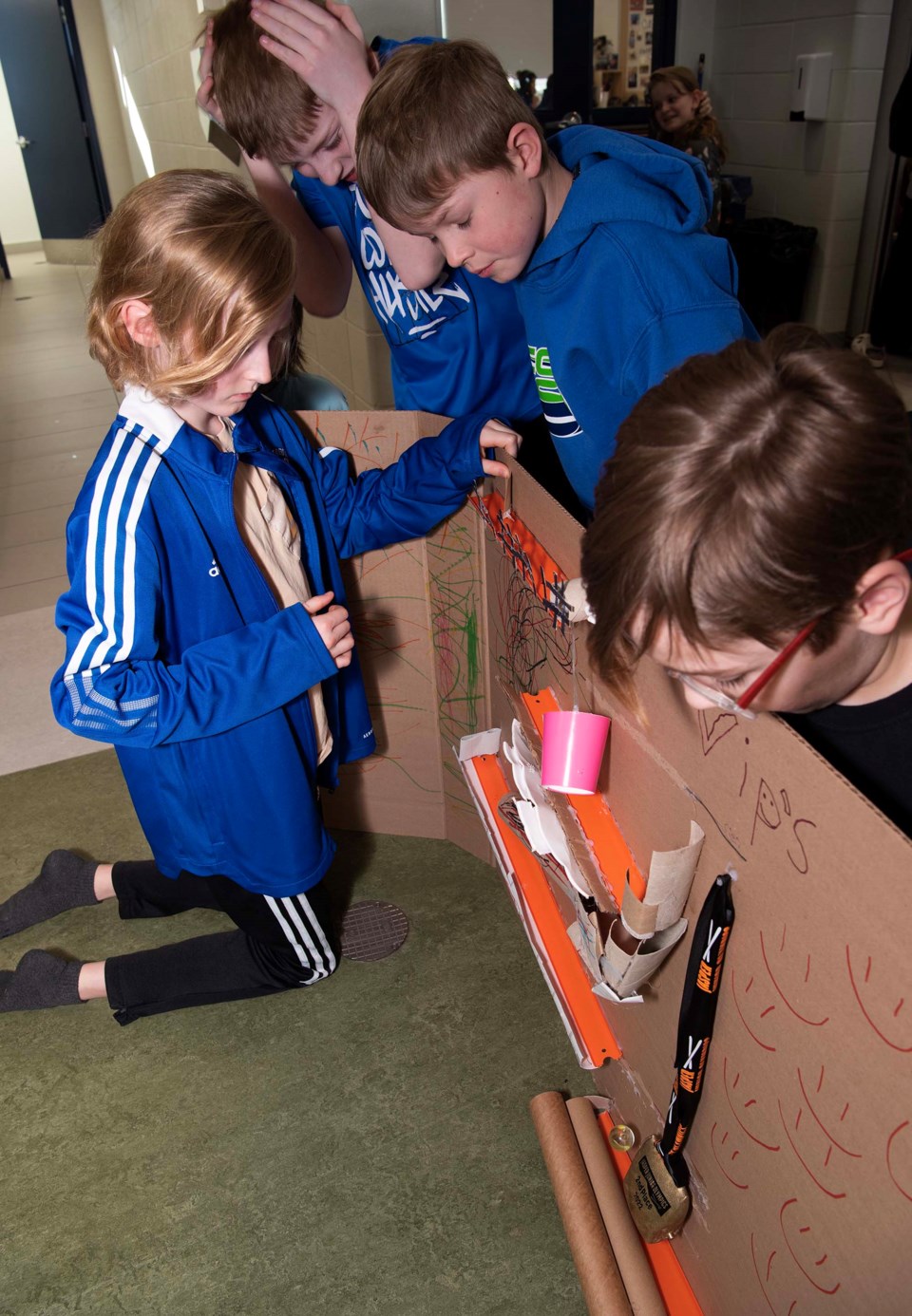Towers will topple this Sunday at the Butterdome as St. Albert students use science to achieve Olympic glory.
Scores of St. Albert student scientists will be at the Butterdome this Feb. 26 for the 2023 Edmonton Science Olympics.
The event will see about 760 Grade 1-12 students from throughout the Edmonton region compete as teams to solve science and engineering challenges related to the school curriculum, explained Elizabeth Tate, outreach co-ordinator with the Association of Professional Engineers and Geoscientists of Alberta (the event’s organizer). Some of these challenges were take-home projects done in advance, while others were mystery events revealed on the day of the competition.
Engineers at work
Sister Alphonse Academy students held a competition Feb. 16 to determine which of them would represent their school at the Olympics.
The Grade 3 and 4 classrooms were abuzz with excited chatter as students showed off their take-home projects to judges and school administrators Don Hinks and Nadine Trenchard. Some made elaborate robots with coloured lenses to decode a secret message, while others had ramps, dominoes, and balloons set up to wake a hypothetical sleeping teacher.
Teacher Krista Klak helped organize the Olympic challenge at Sister Alphonse. She said the challenge promoted teamwork and problem-solving, and gave students a chance to look at real-world problems outside the school.
Grade 4 student Luke Shopland was on one of the Sister Alphonse teams picked to advance the Olympics.
“We had to make a Rube Goldberg machine that wakes up the teacher,” Shopland said, one which included at least five steps.
As Shopland demonstrated, his team’s wake-up machine started when the operator flipped open a cardboard gate, sending large marble down a ramp into a bucket pulley. The pulley lowered the marble down to another series of ramps which sent it careening into a cowbell, producing a loud, teacher-rousing clang. The marble then dropped into a catch-basin to keep it from clobbering the teacher. Shopland said the team toyed with using a popped balloon or spilled water cup in their machine, but went with the cowbell because it was more original.
“The pulley was super-hard to make,” Shopland said, with the team experimenting with multiple cups and axles before finding ones that worked.
Over at Paul Kane, twin brothers and Grade 11 students Jack and Ethan McFarlane were building a transmission tower out of glue and sticks. Their tower will have to withstand a set amount of horizontal force and as much vertical weight as possible before it collapses this Sunday as part of the High Wire Act challenge at the Science Olympics.
Jack said their team settled on a log-cabin design made of paint sticks, as they believed it would have more stability than the triangles and pyramids found in traditional towers. Ethan said they considered making their tower a sort of upward-spiralling-triangle shape, but found that was not feasible under the challenge’s rules.
Jack said the Science Olympics had been pretty fun so far, having given him a chance to show some creativity and put theory into practice.
“It’s different from school because in school the teacher tells you what to do,” he said.
Tate said teams at the Olympics will score points based on their performances in each event. Teams who reach the gold, silver, or bronze point thresholds will receive certificates which transform into paper airplanes that bear images of those medals. The highest-scoring team overall will get an additional prize.
Visit www.apega.ca/educators-students/educators/science-olympics for details on the Science Olympics.




